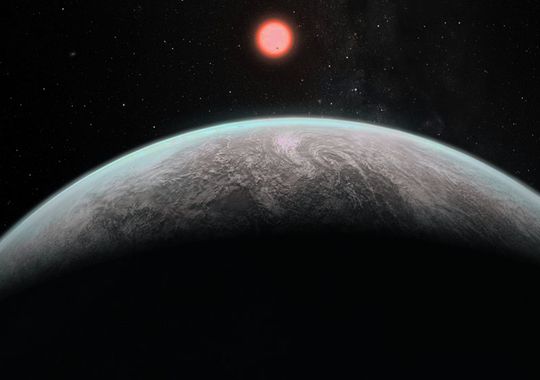Cornell professor explores universe
January 13th, 2015
Matthew Hayes, mhayes@ithacajournal.com | @IJmhayes 12:31 p.m. EST January 12, 2015
ITHACA – Carl Sagan once famously called Earth "the pale blue dot" based on a photo of our planet taken at the periphery of the solar system as the Voyager 1 space probe wandered ever deeper into space.
Now finding planets beyond our own capable of harboring life has become the mission of a new Cornell University professor, as Lisa Kaltenegger and a team she is constructing takes up the work identifying habitable planets elsewhere in the universe.
Kaltenegger, an associate professor of astronomy and director of the Institute for Pale Blue Dots, will soon be taking advantage of a new generation of space and ground telescopes capable of gathering faint specks of light from planets spread across vast distances of space.
Deciphering the light collected from telescopes such as the James Webb Space Telescope, set to orbit the Earth by 2018, and the Giant Magellan Telescope, based in Chile with plans to be operational by 2020, will provide clues as to whether life exists on other planets.
"I think the fascinating thing is that, for the first time in history, we have the tools to figure it out," Kaltenegger said. "Before that it was always more of a discussion over a glass of wine whether or not there is life in the universe — but now it becomes measurable."
In a few years the light collected by those telescopes will be analyzed to determine the atmospheric chemical composition of small, rocky planets. Telltale chemical signatures such as oxygen or ozone, plus a reducing gas it can interact with such as methane, and signs of water, could provide strong clues that something living and respiring exists in pockets throughout the universe.
"What we can see in the atmosphere of a planet is whatever life breathes out and breathes in; that's basically what we can detect without flying there," she said of the chemical detective work that scientists can accomplish when given sensitive-enough telescopes.
As they prepare for those new telescopes to come online, scientists at the institute are now describing the chemical compositions of possible alien planets as they create a database of spectral fingerprints present in theoretically habitable worlds.
To narrow the search, Kaltenegger and her team are first determining what a planet's atmosphere might look like if populated with forms of life comparable to the ones we know. That means, on one end, imagining a world of extremophiles — the organisms that exist in the harshest environments on Earth, and figuring out the balance of chemicals they would produce if they dominated.
The institute at Cornell brings together scientists in the fields of astronomy, planetary science and engineering in an interdisciplinary endeavor to combine their skills and knowledge as they search for life beyond Earth.
Kaltenegger said her goal is to combine the creativity of scientists in different fields to determine the questions they have about alien life, and figuring out how to find the answers. With input from engineers, the institute can also work on the details needed for the missions and telescopes of the future. She hopes to add scientists from the biology and chemistry departments as science works towards identifying what else is out there beyond the pale blue dot we call home.
"It's not going to be easy, but it's doable," she said. "For me, it's seriously fascinating because we live in a time where we can figure out whether we are alone in the universe or not."
Link to Ithaca Journal article:

